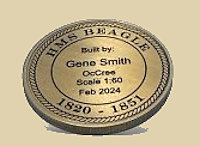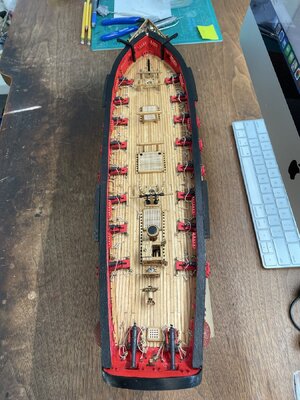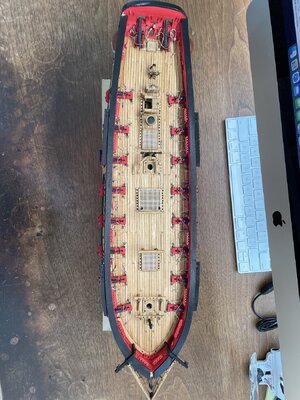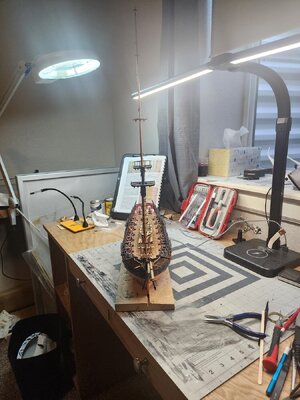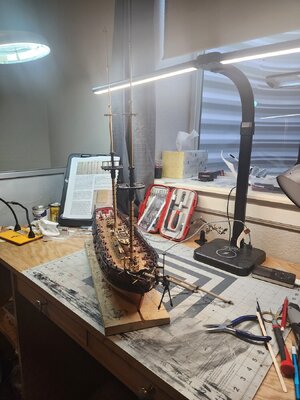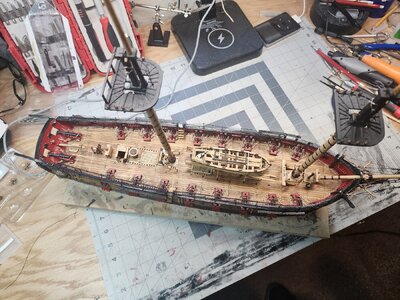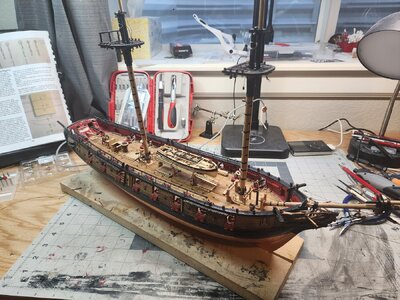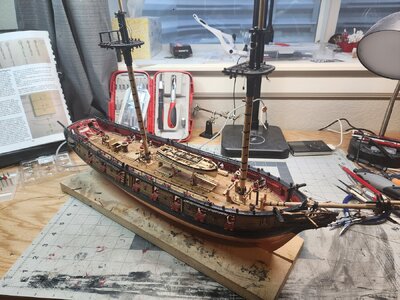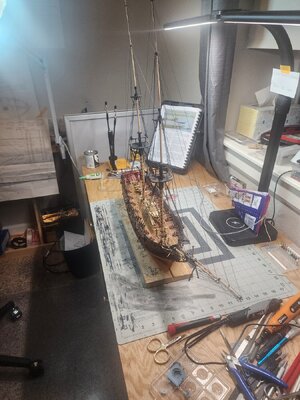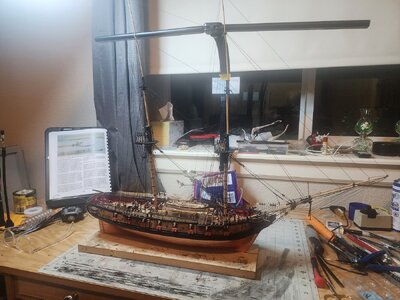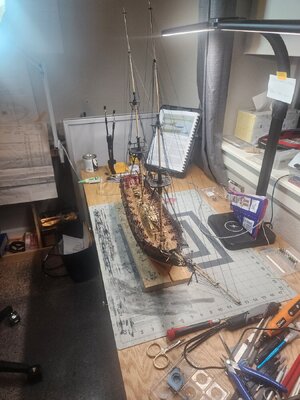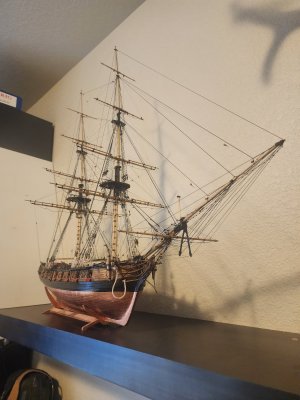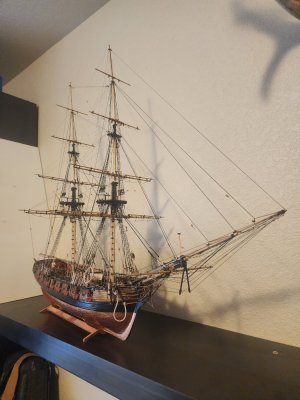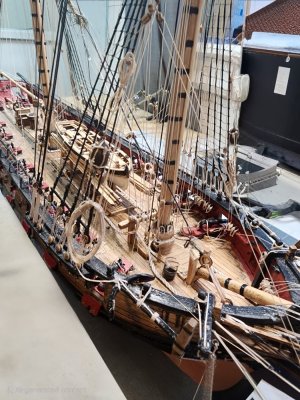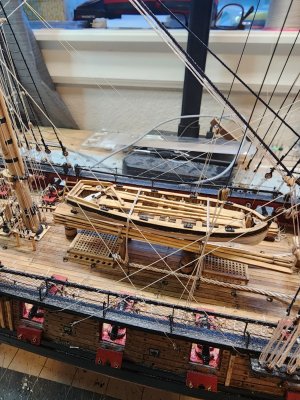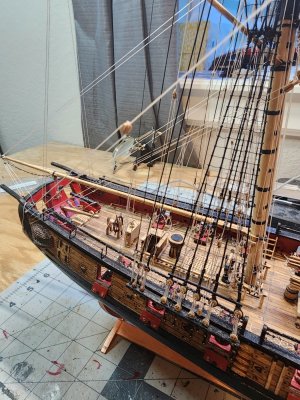I just realized that some other members weighed in on this issue, but here are some of my excerpts from my build logs. Hope it's useful to you.Hi all,
I have been building a Syren model for about 2 years now. I sort of let it go for almost 8 months but am back to working on it steadily. I am also a woodworking hobbyist and love the woodworking detail of the models. Frustrated some times with the scale and my inability to make my fingers do what they need to do, but overall very happy with the results. Although I have some questions regarding things that just seem impossible to make. I am having problems figuring out how to make a rope coil that looks good. The best I've done is wrap a length of thread (.008) around a 1/8" bit and apply a little CA to one side. That shapes it and keeps it together until I can lay it in position. I make several wraps around the shaft and cut off the length I need. What is the process for the hanging coils that would attach to the rigging cleats? I still have that to figure out. Thinking of using some spray starch to hold the shape. Any ideas would be appreciated.
Happy to find this forum to discuss issues and talk with folks with like interests. Looking forward to hearing more from ya'll.
Here is one method for making coils of rope laid on the deck for formal presentation, Flemish coils. Coils of rope are made with a simple jig that has double faced tape on a square of plywood. I hold the bottom stick in a small bench vice to use the jig. Line is stuck to the tape, guided into position using the tip of a razor knife. Then a thick layer of PVA glue is painted onto the coil. The coil is pried free of the tape once dry.
The glue, when dry, holds the oil together. The glue side of of the coil is laid onto the deck, and the rope side is up.
A couple gun tackles, their deck coils, and a cannon carriage are ready. The loose ends of the gun tackle lined are tacked with glue to the deck first, the the coils are glued to the deck with the end of the coil touching the end of the gun tackle line.
Flemish coils are the ones on the right. The coils on the left, which are not as neat, are described next.
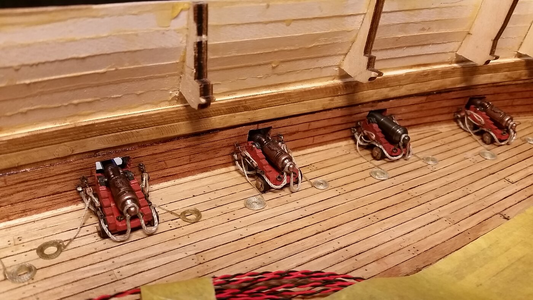
Here is how you can make coils of rope that are not neatly faked on the deck, but look like the ones you normally would make.
Once the tackle lines have dried, a chisel razor knife is used to trim the excess line of the gun tackle line.
Coils of line are wrapped around a rubber coated handle of one of the diamond files which was first wetted with Weldbond PVA glue, which is more pasty and thicker than Elmer's Glue, and dried clear. You can also use Titebond II carpenter's PVA glue.
Once ALMOST dry, the coils are slipped off the file handle and place in a vice and squeezed into a flatter shape, because line coiled on a deck doesn't naturally stack up edge to edge in a cylinder shape.
After 4 minutes in the vice, the glue has fully set. The ends of the coil are trimmed to length, on leaving a slight tail and the other flush with the coil. For each carriage , you need a left hand coil and a right hand coil.
The coils are then glued to the deck, just over the end of the gun tackle line that this glued to the deck, overlapping the ends of the gun tackle lines. This creates the illusion that the coils are extensions of the gun tackle line. This is a preferable method over trying to coil uncooperative thread of the gun tackle into a neat coil and gluing it to the deck. Ask me how I know this.
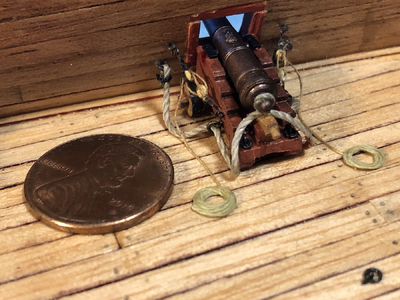
Last edited:

